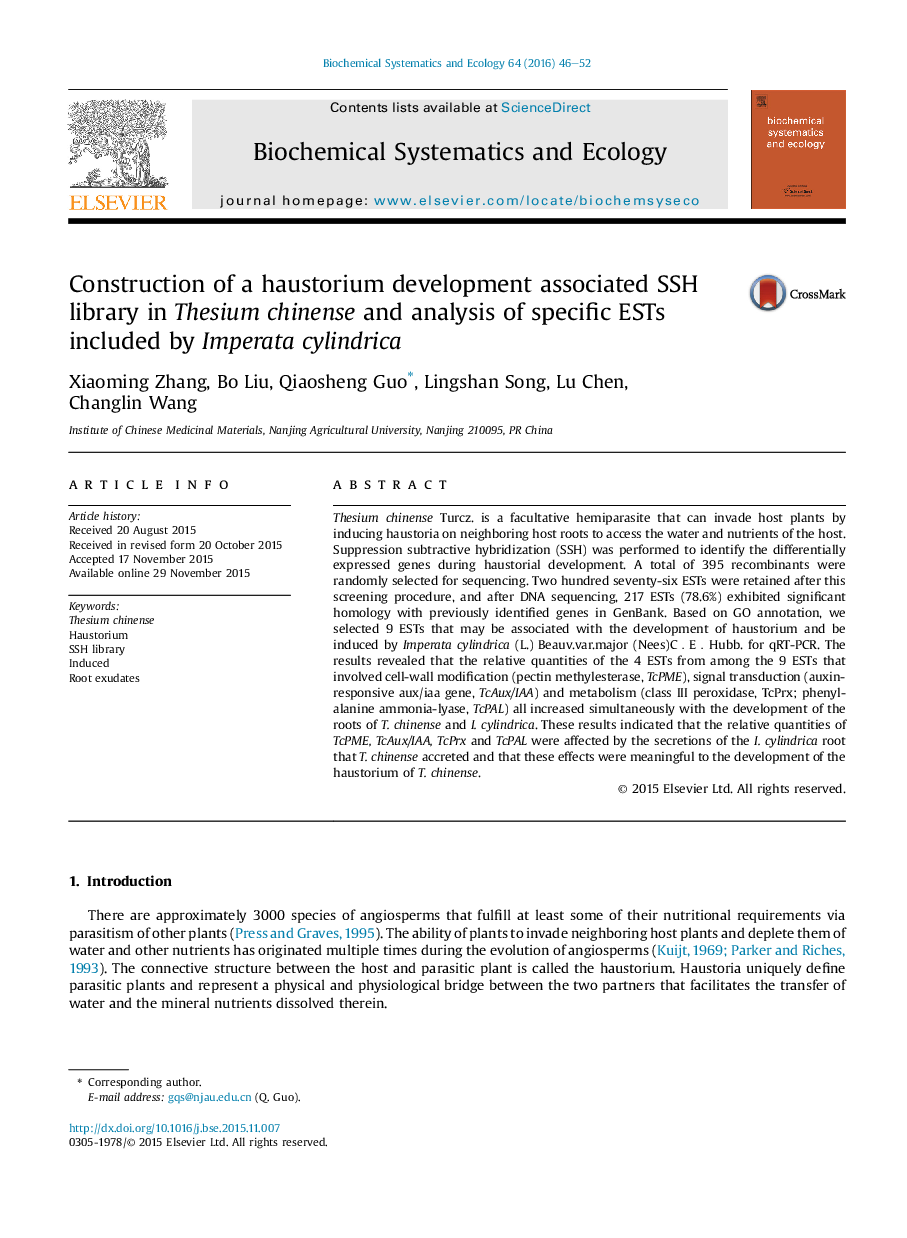| Article ID | Journal | Published Year | Pages | File Type |
|---|---|---|---|---|
| 1353828 | Biochemical Systematics and Ecology | 2016 | 7 Pages |
•SSH was performed to identify differentially expressed genes during haustorial development of Thesium chinense.•The relative quantities of the 4 ESTs were all increasing in haustorium development of T. chinense.•The relative quantities of the 4 ESTs were all increasing in root tissues after induced by host plants.
Thesium chinense Turcz. is a facultative hemiparasite that can invade host plants by inducing haustoria on neighboring host roots to access the water and nutrients of the host. Suppression subtractive hybridization (SSH) was performed to identify the differentially expressed genes during haustorial development. A total of 395 recombinants were randomly selected for sequencing. Two hundred seventy-six ESTs were retained after this screening procedure, and after DNA sequencing, 217 ESTs (78.6%) exhibited significant homology with previously identified genes in GenBank. Based on GO annotation, we selected 9 ESTs that may be associated with the development of haustorium and be induced by Imperata cylindrica (L.) Beauv.var.major (Nees)C.E.Hubb. for qRT-PCR. The results revealed that the relative quantities of the 4 ESTs from among the 9 ESTs that involved cell-wall modification (pectin methylesterase, TcPME), signal transduction (auxin-responsive aux/iaa gene, TcAux/IAA) and metabolism (class III peroxidase, TcPrx; phenylalanine ammonia-lyase, TcPAL) all increased simultaneously with the development of the roots of T. chinense and I. cylindrica. These results indicated that the relative quantities of TcPME, TcAux/IAA, TcPrx and TcPAL were affected by the secretions of the I. cylindrica root that T. chinense accreted and that these effects were meaningful to the development of the haustorium of T. chinense.
